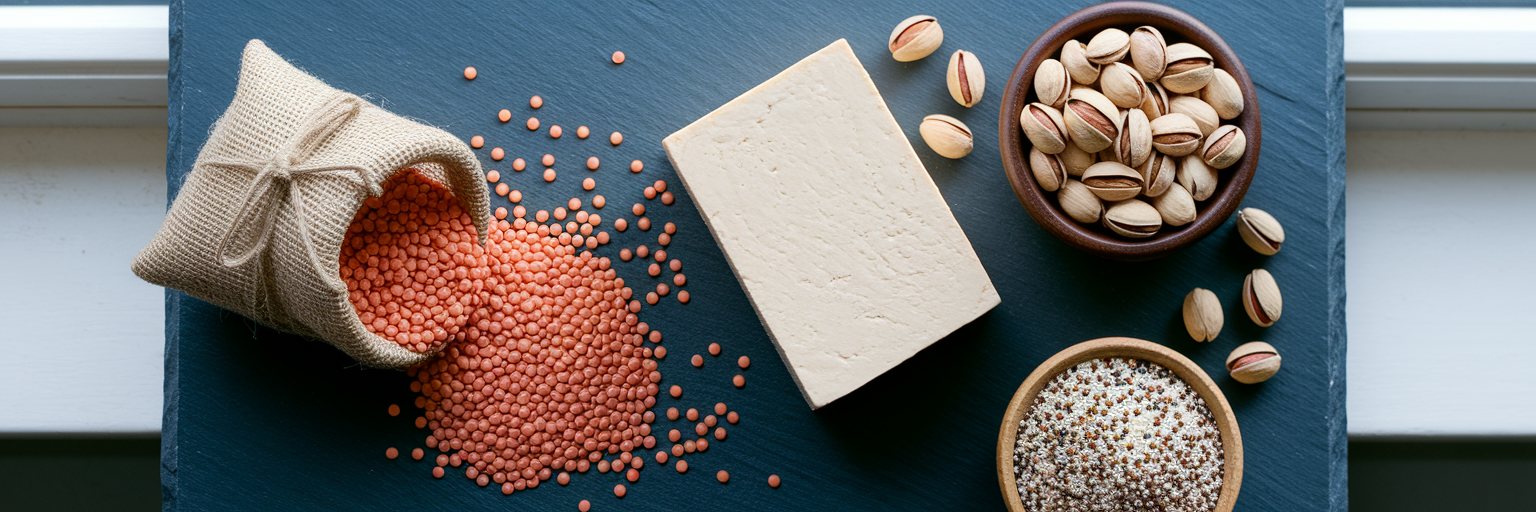The Foundation of Plant-Powered Muscle Growth
More athletes than ever are proving you can build serious strength and muscle on a plant-based diet. The old idea that you need meat to get strong is quickly becoming a thing of the past. If you're ready to build muscle effectively while eating plants, you've come to the right place. This vegan muscle building guide is designed to give you a clear and simple plan.
So, how does muscle growth actually happen? Think of your muscles like a structure. When you lift weights, you create tiny micro-tears in the muscle fibers. Your body then repairs this "damage" by patching it up and adding new material to make the structure stronger and bigger than before. This repair process is called muscle protein synthesis (MPS).
To make these repairs, your body needs two key things. First, it needs building blocks. This is where protein comes in. The amino acids from protein are the raw materials your body uses to rebuild muscle tissue. Second, your muscles need energy to perform the intense work that stimulates growth in the first place. That’s where a supplement like creatine can be a powerful ally, acting as an energy booster for your workouts.
Understanding this simple foundation is the first step. You provide the stimulus with training, and then you supply your body with the right nutrients to recover and grow. It’s a straightforward formula that works just as effectively for plant-based athletes.
Mastering Your Vegan Protein Intake

Protein is the cornerstone of muscle repair, but the conversation around it can feel complicated. Let's break down exactly what you need to know about plant based protein for muscle growth, without the confusion.
Why Amino Acids Are Your Best Friends
Think of protein as a chain made of links called amino acids. Some of these, known as essential amino acids (EAAs), your body can't make on its own. You have to get them from food. A "complete protein" is simply a food that contains all nine EAAs. While many animal products are complete proteins, so are many plant foods like soy, quinoa, and pistachios.
Here’s some good news: you don’t need to stress about combining different foods in one meal to get a complete protein. Your body is smart enough to pool amino acids from everything you eat throughout the day. As long as you eat a variety of plant protein sources, you’ll give your body all the building blocks it needs.
Your Plant-Based Protein Shopping List
Knowing which foods are packed with protein makes meal planning much easier. Here is a quick cheat sheet to help you stock your kitchen:
| Food Source | Serving Size | Approx. Protein (grams) |
|---|---|---|
| Lentils (cooked) | 1 cup | 18g |
| Tempeh | 3 oz (85g) | 16g |
| Tofu (firm) | 3 oz (85g) | 10g |
| Pistachios (shelled) | 1/4 cup | 6g |
| Quinoa (cooked) | 1 cup | 8g |
| Hemp Seeds | 3 tbsp | 10g |
| Seitan | 3 oz (85g) | 21g |
Note: Protein content can vary slightly by brand and preparation method. This table provides average values to help guide meal planning.
If you're looking for inspiration, there are many delicious ways to prepare these foods. You can find some easy vegan protein recipes you'll actually crave to get started.
How Much Protein Do You Actually Need?
The most common question is, how to get enough protein vegan? For active individuals looking to build muscle, a good target is 1.2 to 1.6 grams of protein per kilogram of body weight. Let's make that practical. If you weigh 175 pounds:
- Convert your weight to kilograms: 175 lbs ÷ 2.2 = 79.5 kg.
- Multiply by the protein target: 79.5 kg × 1.6 g = 127 grams of protein per day.
Hitting that number with whole foods is achievable, but on busy days, a high-quality protein powder can be a convenient way to ensure you meet your goal. A scoop of a clean, effective supplement like this chocolate vegan protein can make all the difference in reaching your daily intake.
Creatine's Role in a Vegan Fitness Plan
While protein rebuilds muscle, creatine helps you do the work that stimulates growth. Think of it as a rechargeable battery for your muscles. It helps your body rapidly regenerate its main energy currency, ATP, which is used for short, explosive movements like lifting weights or sprinting. More energy means you can push for an extra rep or two, and that extra work adds up to more muscle over time.
This is where creatine for vegan athletes becomes especially valuable. Creatine is naturally found in animal tissues, so people who eat meat have higher baseline levels in their muscles. Since plant-based diets contain no creatine, supplementation can provide a significant performance boost by topping off your muscle stores. Its ability to enhance performance is well-documented in sports science, including a major review in the journal Nutrients published via PMC.
When it comes to choosing a supplement, the science is clear. The best vegan creatine monohydrate is simply pure creatine monohydrate. It's the most studied, effective, and affordable form on the market. There's no need for fancy, expensive alternatives. When choosing a supplement, look for pure creatine monohydrate for proven results.
A simple maintenance dose of 3–5 grams per day is all you need. Some people start with a "loading phase" of 20 grams a day for a week, but it's not necessary. A consistent daily dose will saturate your muscles within a few weeks. Creatine is one of the safest and most researched supplements available. Just be sure to drink plenty of water to stay well-hydrated. If you want to learn more about the science, understanding the full creatine benefits can help you see why it's a staple for so many athletes.
Creating a Powerful Nutritional Synergy

Now that you understand the roles of protein and creatine, how do you put them together for the best results? The good news is, it’s incredibly simple. There’s no complex timing or secret formula required. The easiest method is to combine them in a post-workout shake.
You may have heard about the "anabolic window," the idea that you must consume protein within 30 minutes of your workout. While it’s a good habit to refuel after training, modern research shows that this window is much wider than we thought. What matters most is your total daily protein intake and consistency. The same goes for creatine. Taking it daily is far more important than what time you take it.
Combining them after a workout is simply a convenient way to get both in. Here’s a simple, effective shake recipe:
- 1 scoop of vegan protein powder
- 1 serving (3-5g) of creatine monohydrate
- 1 banana (for carbohydrates to replenish energy)
- 1.5 cups of your favorite plant-based milk
- A handful of spinach (you won't taste it!)
The synergy is powerful. Creatine helps you work harder in the gym, creating a stronger stimulus for growth. Then, the protein provides the essential amino acids your body needs to repair that muscle and build it back stronger. It’s a one-two punch that supports your hard work and maximizes your results.
Your Blueprint for Plant-Based Gains
Building muscle is a marathon, not a sprint, but with the right strategy, you can make consistent progress. The absolute foundation of your success is resistance training with progressive overload. This just means you need to consistently challenge your muscles by gradually increasing the weight, reps, or intensity of your workouts. Without that stimulus, your muscles have no reason to grow.
Next, you need to fuel that growth. Building new muscle tissue requires energy, which means you’ll likely need to be in a modest calorie surplus. Think of it like a construction project; you need extra materials and energy to build something new. You can achieve this by incorporating more calorie-dense, high-protein vegan foods like nut butters, lentils, tofu, and seitan into your meals.
In fact, a 2024 study in the journal Nutrients concluded that well-planned, completely plant-based diets can effectively meet the energy and protein requirements for maximizing strength and hypertrophy. It all comes down to a smart plan.
Here is your simple blueprint, the four pillars of plant-based gains:
- Consistent Training: Follow a structured resistance training program and aim for progressive overload.
- Sufficient Protein: Hit your daily protein target (1.2-1.6g/kg) with a variety of plant sources.
- Daily Creatine: Supplement with 3-5 grams of creatine monohydrate every day for strength and power.
- Supportive Calorie Intake: Eat enough food to fuel your workouts and provide the energy needed for muscle growth.
With this framework, you have everything you need to build muscle successfully on a plant-based diet. It’s not about magic pills or secret workouts; it’s about consistency, smart nutrition, and hard work. Now that you have the blueprint, continue exploring tips and strategies on our blog. If you found this guide helpful, share it with a friend who might benefit!



